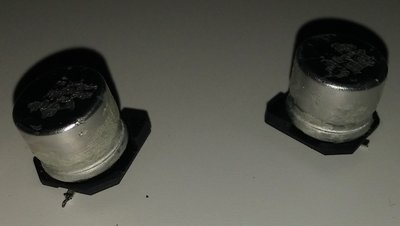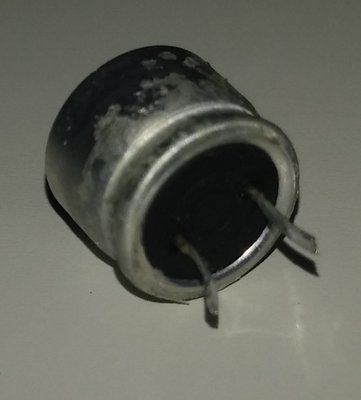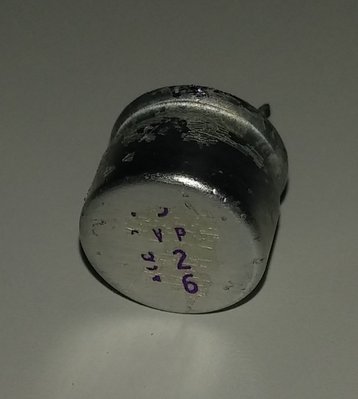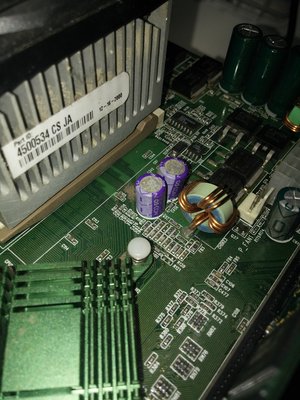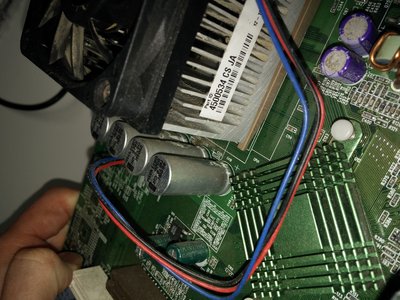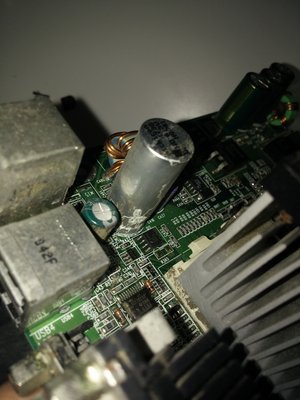First post, by Ozzuneoj
- Rank
- l33t
I do a lot of harvesting from scrap lots, so I have a lot of parts that have had rough lives. I like to get them working if possible.
I'm sure that people more experienced in this field will already be familiar with this, but lately I have been noticing SMD caps failing in ways I wouldn't expect.
The other day I replaced a whole bunch of SMD electrolytic caps (not solid polymer caps, I don't think) on an ASUS Geforce 256 because they all had these odd white swirly lines all over the sides and top. It almost looked as if someone drizzled the tiniest line of white glue on them, but there's no reason anyone would do this, and it was all around each tiny capacitor. It was ONLY on the capacitors too. I replaced them and the card still doesn't work, so I'll have to investigate further...
Today however, I had a Geforce 3 Ti 500 that had a missing heatsink, missing bracket and a tiny busted SMD cap. I replaced the cap and it still wouldn't work (no display at all). The only other possible issue I could find with it was that the two large 82uf 16v SMD caps (which I'm pretty sure are solid polymers, since they have odd ratings) had what looked like a whitish film or tarnish all over them.
The rest of the card does not appear to have been exposed to water, because there was still dust in all the places the cooling fan would have put it. So, I figured, why not replace them? I didn't have matching poly caps, but I read online that poly caps should generally have 1/3 the capacitance rating of a standard low-esr electrolytic (I don't know the reason, I've just read this multiple times). I figured I'd wing it and do the opposite and get whatever cap I have that's close to 3x the rating of the poly caps, so found a couple of low-esr 220uf 16v SMD caps I bought recently. I replaced them and it works now! 😲
Are there any engineers out there that can explain what is going on here and why we're seeing failures like this? I know that no capacitor can really be "perfect" but I was under the impression that solid polymer caps couldn't really "leak" and were extremely reliable. So what is happening here? These would be from the early 2000s capacitor plague era, but I've never heard of solid caps being effected by this.
Also, I'll try to get a picture of a capacitor with that crazy white frosting drizzle thing on the other non-polymer SMD caps too... it is quite hard to describe.
Now for some blitting from the back buffer.
